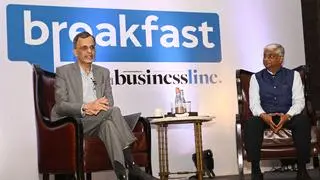S&P Global Ratings expects polarisation in the performance of commercial banks in India, with State Bank of India and some private sector banks set to record profitability more sharply than the system. It also said that global uncertainties will have modest impact on the Indian banking sector.
In a report titled ‘Global Bank Country-By-Country Outlook 2023’, with special reference to India, it said: “System return on average assets to be adequate at 1 per cent, but polarisation prevalent. State Bank of India and the leading private-sector banks have largely addressed their asset quality challenges, and their profitability is improving more sharply than the system’s. Many large public-sector banks are still saddled with weak assets, high credit costs, and poor earnings.” It also expects a mixed-bag performance for finance companies (fincos). The asset quality of fincos is often weaker than that of major private-sector banks.

India has 12 public sector banks (PSBs) such as SBI, Bank of Baroda and Punjab National Bank, and 22 private sector banks such as ICICI Bank, HDFC Bank and Axis Bank. Earlier this month, Finance Minister Nirmala Sitharaman had said that the continuous efforts of the Government in reducing non-performing assets (NPAs) and strengthening the health of PSBs were showing tangible results. All 12 PSBs declared net profit of ₹25,685 crore in the July-September quarter of FY23 and ₹40,991 crore in the April-September (H1) of FY23, up by 50 per cent and 31.6 per cent, respectively.
The agency expects that credit momentum will be good but deposit growth will lag. “In the next few years, we expect loan growth to stay somewhat in line with the trajectory of nominal GDP, and loan growth to the retail sector to continue to exceed that of the corporate sector,” it said. Latest RBI data shows that bank credit has grown 17.9 per cent year-on-year, a 10-year high for the fortnight ended October 21. During the same period, deposit growth was 9.5 per cent. This means there is credit deposit growth of 840 basis points.
It sees improvement in weak assets. “We project the banking sector’s weak loans will decline to 4.5-5 per cent of gross loans by March 31, 2024. Likewise, we forecast the credit costs to normalise to 1.2 per cent for fiscal 2023 and stabilise at 1.1-1.2 per cent for the next couple of years,” it said. This makes credit costs comparable to those of other emerging markets and to India‘s 15-year average.
The agency acknowledged that the small and midsize enterprise sector and low-income households are vulnerable to rising interest rates and high inflation. But, in the case of moderate interest rate hikes, risks are limited. It also said that slower global growth and external demand will weigh on economic activity and could fuel further inflation. However, given that India is domestically oriented, “we expect the economic growth to be less affected. Moreover, we assume the impact on the banking sector will also be modest.”











Comments
Comments have to be in English, and in full sentences. They cannot be abusive or personal. Please abide by our community guidelines for posting your comments.
We have migrated to a new commenting platform. If you are already a registered user of TheHindu Businessline and logged in, you may continue to engage with our articles. If you do not have an account please register and login to post comments. Users can access their older comments by logging into their accounts on Vuukle.